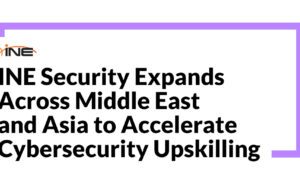Effective leadership plays a pivotal role in steering projects towards success, regardless of whether they follow Agile or traditional project management methodologies. In this blog, we will delve into the significance of leadership in both Leading SAFe® and PMP® methodologies. We’ll explore how strong leadership skills are essential for driving teams, fostering collaboration, and overcoming challenges in today’s dynamic project environments. Additionally, we’ll discuss how individuals can enhance their leadership capabilities through Safe online training and PMP certification training online, enabling them to excel in both Agile and traditional project management settings.
1. Leadership in Leading SAFe®: Nurturing Agile Mindset
Leading SAFe® relies on Agile principles to manage projects, emphasizing adaptability and continuous improvement. Leadership in this framework must embody the Agile mindset, empowering teams to be self-organizing, collaborative, and customer-centric.
- Embracing Agile Values: Leaders in Leading SAFe® must advocate for and instill Agile values such as transparency, inspection, and adaptation. These values serve as guiding principles for teams to embrace change positively and deliver value continuously.
- Servant Leadership Approach: The role of leaders in Leading SAFe® goes beyond just issuing directives. They adopt a servant leadership approach, supporting teams and removing impediments to enable their success.
2. Leadership in PMP®: Orchestrating Traditional Projects
PMP® focuses on the traditional project management approach, with a strong emphasis on planning, controlling, and meeting specific project objectives. Leadership in PMP® requires a more structured and process-oriented approach.
- Defining Clear Objectives: PMP® leaders must establish clear project objectives, ensuring all team members understand the project’s goals and expectations.
- Effective Planning and Execution: Leaders are responsible for meticulous project planning, resource allocation, and ensuring the successful execution of the project plan.
- Monitoring and Control: PMP® leaders continuously monitor project progress, identify deviations, and take corrective actions to keep the project on track.
3. The Convergence of Leadership in Both Methodologies
While Leading SAFe® and PMP® differ in their methodologies, certain leadership traits are beneficial for both approaches:
- Strong Communication Skills: Effective leaders communicate clearly, foster open dialogue, and ensure that all team members are aligned with project goals.
- Adaptive Decision-making: In both Agile and traditional settings, leaders must be capable of making swift decisions, considering available information and project constraints.
- Embracing Change: Agile environments emphasize flexibility, while traditional projects may encounter unexpected changes. Leaders must navigate these challenges and help teams adapt to change.
4. Enhancing Leadership Capabilities through Safe Online Training and PMP Certification Training Online
To excel in both Leading SAFe® and PMP®, individuals can seek additional training and certifications. Safe online training provides insights into Agile methodologies, Lean thinking, and scaling Agile practices for enterprises. Similarly, PMP certification training online equips leaders with industry-recognized project management skills, emphasizing the importance of risk management, quality assurance, and stakeholder engagement.
Conclusion:
In conclusion, leadership is a critical factor in both Agile and traditional project management methodologies. Whether leading in a dynamic Agile environment using Leading SAFe® or employing a structured approach with PMP®, effective leaders inspire teams, navigate challenges, and drive projects to successful outcomes. By honing their leadership skills through Safe online training and PMP certification training online, professionals can become adept at handling diverse project scenarios, contributing to their organization’s overall growth and success.



































